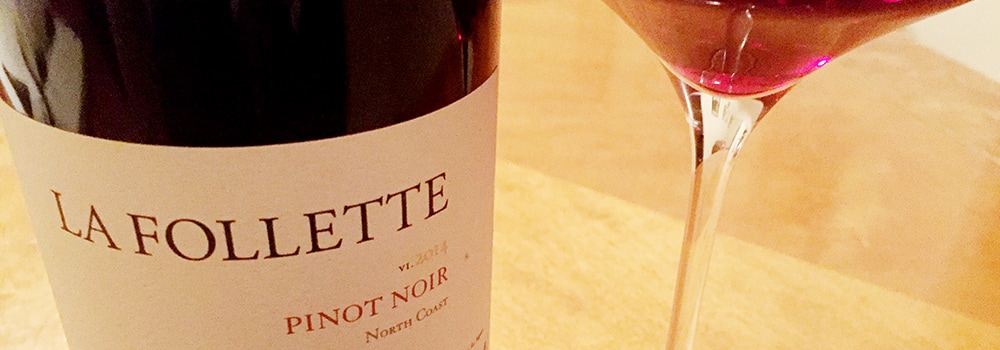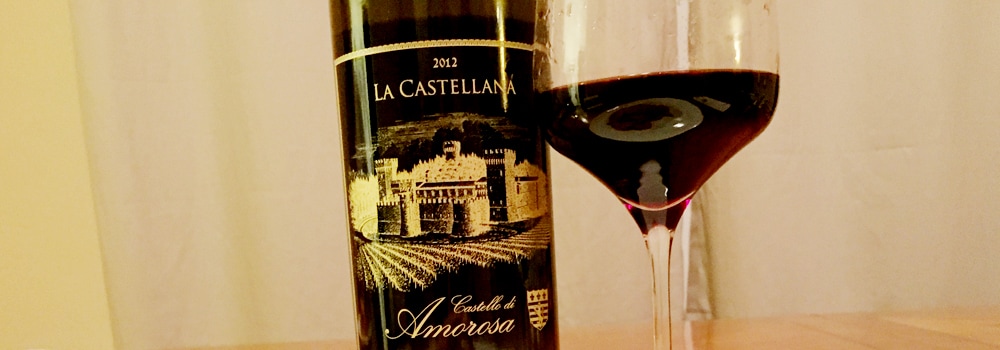|
In recent months, I’ve tasted a lot of single-vineyard bottlings of Russian River Valley Chardonnay and Pinot Noir. So when the La Follette North Coast Chardonnay and Pinot Noir from the 2014 vintage landed in my lap, I was curious to see how these larger, more all-encompassing appellated bottles would stack up to the specificity of single-vineyard counterparts. The North Coast appellation encompasses a lot of territory across both Sonoma and Mendocino counties, so the range from which to source grapes is pretty far-reaching. Within the North Coast appellation, there are quite a few sub-appellations—including some of Sonoma County’s well-known appellations for growing these Burgundian varietals, like Russian River Valley and the soon-to-be Petaluma Gap (appellation approval currently pending). And while there is no doubt that the grapes sourced from North Coast are of high quality, they present a style that is more an amalgamation of climates and terroir, rather than zoning in on one specific climate and terroir like a single-vineyard wine does. If you know anything about La Follette, then you know these wines are in excellent hands with Associate Winemaker Simone Sequiera. A traditionalist at heart with former experience in Burgundy, her wines always call upon a Burgundian style, and the estate adheres to a meticulous approach in the vineyard and a minimalist approach in the cellar. Sequiera is a winemaker who believes that the wines are made in the vineyard, so even with these more affordable North Coast bottlings, you can bet you are going to get a well-crafted bottle of wine. 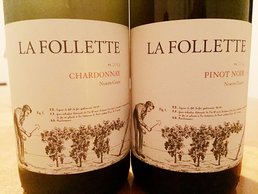 The 2014 North Coast Chardonnay from La Follette is definitely made in a Burgundian style. This is not a buttery California Chardonnay—it seems that a some point, this clichéd phrase may no longer be relevant—but rather a crisp and refreshing Chardonnay that expresses itself clearly in the glass, unmasked by winemaking techniques. The grapes are harvested from Mendocino County and old vines on the Sonoma Coast. Aromatically, there are fresh notes of underripe honeydew melon, lemon curd, a touch of fresh-baked bread and a smoky characteristic. The grapes are fermented in both tank and barrel, bringing a nice balance of texture to the palate with its crisp edges and smooth mouthfeel. Those same notes of underripe honeydew melon are found in the mouth, with meyer lemon and white nectarine flavors. This is a very juicy and fresh Chardonnay with poignant acidity balanced by a gentle roundness at mid-palate. 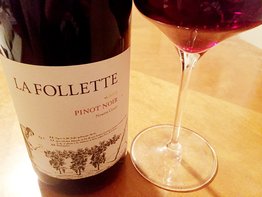 A significant portion of the grapes for the 2014 North Coast Pinot Noir come from the Petaluma Gap area of the Sonoma Coast AVA. Petaluma Gap is primed to be the newest appellation in Sonoma County and their application to the TTB has been underway for almost a couple years now. The ruling should be given soon, but despite the bureaucracy, there is no denying that Petaluma Gap has already made a name for itself in the industry with their Burgundian varietal wines. The area is prone to wind and fog that rolls in from Petaluma through a ‘gap’ in the terrain—hence the name. Keeping that in mind when tasting the 2014 North Coast Pinot Noir, it seems to elicit that very cool, windswept terroir. There is good acid on the palate, a very light body, and tart fruit abounds. The nose is a bit reticent at first, but then brings spiced red cherry, bright strawberry and an almost stemmy aroma—it’s possible Sequiera used some stem-inclusion when fermenting the grapes for this wine, as is often the case when making wine in a Burgundian style. In the mouth, the light body and simple profile allows the malolactic fermentation to show through just a bit, alongside flavors of strawberry and baking spice. This wine is easy-drinking and would make an excellent match with foods like baked salmon and roasted pork tenderloin. Given that these two wines each retail for $22, I am impressed by the quality. It is difficult to find a good price to quality ratio when it comes to Pinot Noir these days, so it is nice to see affordable bottles like this coming from such an esteemed winemaker. These wines are great for everyday-drinking occasions.
0 Comments
I recently took a trip to Italy, so when I came home, I was anxious to get to a sample of wine that had been sitting in my cellar for admittedly too long. The wine is Castello di Amorosa’s 2012 La Castellana, which is their Napa Valley version of an Italian Super Tuscan. The history of Super Tuscan wines began when Italian winemakers in Tuscany wanted to make wines using grape varieties that were both not indigenous to Italy and not allowed to be used under the DOC/DOCG appellation laws. Tuscany is the proud home of the indigenous Sangiovese grape variety, but with the birth of Super Tuscans came wines blending Sangiovese, Cabernet Sauvignon, Cabernet Franc, Merlot and other Bordeaux varieties. Super Tuscans are very different from traditional Tuscan wines, because the blending in of Bordeaux varieties can bring a more saturated color, more robust palate, additional texture, new flavors, a different tannin level and the ability for the wine to take more new oak. These wines tend to be hearty but balanced, and many of them are incredibly long-lived. The same can be said for Castello di Amorosa’s 2012 La Castellana, a wine that is both robust but balanced and showing signs of age-worthiness. 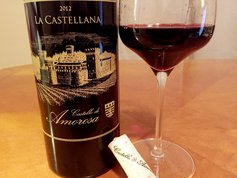 Castello di Amorosa’s 2012 La Castellana from Napa Valley is comprised of 76% Cabernet Sauvignon, 15% Sangiovese and 9% Merlot. This combination brings a sturdy tannin structure and dark fruit profile from the Cabernet Sauvignon, the brightness and acidity we all love from Sangiovese, and the softness in texture that defines Merlot. This is a blend that while still young, finds balance and is drinkable now, though you can tell that the wine has the stuffing to develop well in the cellar. This 2012 La Castellana opens with a fully body and soft, but grainy tannin structure that is quickly mellowed by the softness texture that Merlot brings to any well-balanced blend. Dark fruit is juxtaposed against the oak, but the latter is not overbearing. With that being said, time in the cellar with lessen that oak and allow the wine to relax a bit more. You can taste the heartiness of this wine; the weight in the mouth is noticeable and surrounds the luscious dark chocolate-covered blackberry flavors. Letting the wine breathe a bit, after about an hour in the glass, it showed a softer and juicier profile—much more relaxed—with blackberry and an almost earthy, eucalyptus-like quality. |
Wine Blog Archives
December 2020
|
